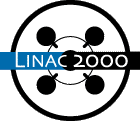
W. Gudowski (Technical University Sweden)
Abstract. The concept of Accelerator-driven Transmutation of Wastes (ATW) couples a particle accelerator with a subcritical nuclear reactor core through neutrons generated in a spallation process. The accelerator may either be a linear accelerator or a cyclotron delivering a particle current of several tens mA with an energy around 1 GeV. High-intensity particle beam (proton in most concepts) impinged into a spallation target of a heavy metal, produces an intense source of spallation neutrons, which drive a subcritical reactor core, which is in principle very similar to that of a critical nuclear reactor. Criticality concerns, decay heat management and radioactive waste handling are perceived as the primary, unsatisfactorily resolved technological problems of nuclear reactors. They all originate from very specific features of a fission phenomenon: self-sustained chain reaction in fissile materials, very strong radioactivity of fission products and very long half-life of some of the radioactive fission and activation products Accelerator-driven transmutation systems operate in a subcritical mode and stay subcritical, regardless of the beam being on or off, so they can in principle address the safety issues associated with criticality particularly for advanced fuel containing a high fraction of minor actinides. Subcriticality can also improve the controllability of this nuclear system through a simple electronic control of the accelerator. Subcriticality provides also substantial flexibility in fuel processing and managing. Accelerator-driven transmutation systems can accept such fuels that would be impossible or difficult to use in critical reactors, and can extend their cycle length improving significantly a transmutation performance. Moreover, an advanced subcritical core design can also address some concerns of decay heat management. However, a significant development of accelerator technology has to be achieved before a construction of the first industrial ATW facility can be realized. The high-intensity accelerator with a beam power in the range of 10-100 MW has to be available with the stability, efficiency, reliability, operability and maintainability features never demanded before from the accelerator technology. The paper presents the potential of accelerator driven transmutation technologies, a possible impact of these concepts on the future nuclear power and proposes also some solutions to mitigate the problems arising on the coupling of an accelerator and a subcritical nuclear reactor.
Comments or Questions to
linac2000@slac.stanford.edu